M
I
C
R
O
S
T
O
R
Y
O
F
A
R
T
........................................................

NOW COMPLETED:

........................................................
MICROSTORY OF ART
ONLINE JOURNAL FOR ART, CONNOISSEURSHIP
AND CULTURAL JOURNALISM
........................................................
INDEX | PINBOARD | MICROSTORIES |
FEATURES | SPECIAL EDITIONS |
HISTORY AND THEORY OF ATTRIBUTION |
ETHNOGRAPHY OF CONNOISSEURSHIP |
SEARCH

........................................................



 >MICROSTORIES
>MICROSTORIES
- Richard Serra
- Martin Scorsese
- Claude Simon
- Sunshine
- Werner Herzog
- The Creation
- Marcel Duchamp
- Nino Rota
- Wölfflin and Woolf
- Hansjörg Schneider
- Kraftort Arkadien
- Visual Biography
- Schlaraffenleben
- Die Geisteswissenschaften
- The Voyeur
- Buzzword Sustainability
- Paul Verlaine
- Tao Yuanming
- New Beginning
- Seneca
- Still Lifes
- Charles Baudelaire
- Frédéric Chopin
- The Art History of Sustainability
- Wang Wei
- Solarpunk
- Historians of Light
- Lepanto
- Renaturalization
- Plates
- Snow in Provence
- Learning to See
- Picasso Dictionaries
- Peach Blossom Spring
- Picasso Tourism
- Tipping Points
- Sviatoslav Richter
- Weather Reports
- Treasure Hunt
- Another Snowscape in Picasso
- Picasso in 2023
- Dragon Veins
- The Gloomy Day
- The Art of the Pentimento
- Reforestation
- The Status of Painting
- Emergency Supply
- Punctuality
- Watching Traffic
- Zhong Kui
- How Painting Survived the 1990s
- Confirmation Bias
- Sustainability and Luxury
- Garage Bands
- Picasso and Artificial Intelligence
- Eyes of Tomorrow
- Picasso in 2023 2
- Gluing Oneself to Something
- Suburbia
- Bamboo
- Sustainability and Carpe Diem 1
- Interviews with Bruegel
- Sustainability and Carpe Diem 2
- Coffee & Sugar
- Bamboo 2
- Picasso in 2023 3
- Sustainability and Carpe Diem 3
- Cherry Orchard
- Old Magazines
- Chance
- Nick Drake
- Harlequin
- The Smartphone & the Art Book
- Atlas Syndrome
- The Kitchen
- Atlas Syndrome 2
- Consideration
- Tori Amos
- School
- Orchard Auctioning Day
- The Hundred Years’ War
- Sócrates
- Chameleon
- Nefertiti Bust
- Picasso as a Computer
- Sunflowers
- Philemon & Baucis
- Ode to the Radio
- Childhood
- Wimmelbild
- Restitution
- Nick Drake 2
- Wishful Thinking
- Sundays
- The Independent Scholar
- September
- The Fisherman by Pirosmani
- Microadventure
- Sociology
- Salvator Mundi
- Chillon
- Appassionata
- Amber
- Homer
- Berlin
- Planet Walk
- Improvisation
- Seeing Picasso
- These Nice Kids
- Robber
- The One
- The Sea Turtle
- Zoo
- Through the Hush
- Wunderkammer
- I Do Not Seek, I Find
- Shopping Mall
- Food Hamper
- The Secretary
- This Gate
- Nor Rainy Day
- House on a Hill
- Beautiful Island
- Second-hand Bookstore
- Flat
- Slap in the Face
- Serra, Wenkenpark
- Apologies
- The Bells
- Nordmann Fir
- Picasso Wanting To Be Poor
- Picasso, Pirosmani
- A Brief History of Sculpture
- 24 Sunsets
- Rusty Phoenix
- Glove
- Wintry Stanza
- A Song
- Like A Beatle
- Catching An Orange
- Solar Bees
- Permaculture

 >FEATURES
>FEATURES
- Van Gogh On Connoisseurship
- Two Museum’s Men
- Ende Pintrix and the City in Flames
- Titian, Leonardo and the Blue Hour
- The Man with the Golden Helmet: a documentation
- Un Jury d’admission à l’expertise
- Learning to See in Hitler’s Munich
- Leonardo da Vinci and Switzerland
- The Blue Hour Continued
- The Blue Hour in Louis Malle
- Kafka in the Blue Hour
- Blue Matisse
- Blue Hours of Hamburg and LA
- A Brief History of the Cranberry
- The Other Liberale in the House
- The Blue Hour in Raphael
- Who Did Invent the Blue Hour?
- Monet on Sustainability
- Velázquez and Sustainability
- The Blue Hour in Guillaume Apollinaire
- Van Gogh on Sustainability
- The Blue Hour in Marcel Proust
- Picasso and Sustainability
- The Contemporary Blue Hour
- The Blue Hour in 1492
- The Blue Hour in Hopper and Rothko
- Hopper and Sustainability
- The Blue Hour in Ecotopia
- The Hour Blue in Joan Mitchell
- Explaining the Twilight
- The Twilight of Thaw
- The Blue Hour in Pierre Bonnard
- Explaining the Twilight 2
- Picasso on Stalin
- Rubens on Sustainability
- The Salvator Mundi in Bruegel and Rubens
- The Blue Hour in Leonardo da Vinci and Poussin
- The Blue Hour in Rimbaud
- Faking the Dawn
- Frost and Thaw in Ilya Ehrenburg
- Picasso, Stalin, Beria
- Picasso, Solzhenitsyn and the Gulag
- Shostakovich on Picasso
- Hélène Parmelin in 1956
- Historians of Picasso Blue
- Picasso Travelling to Moscow 1
- The Blue Hour in Caravaggio
- Picasso Travelling to Moscow 2
- Picasso, the Knife Game and the Unsettling in Art
- Some Notes on Leonardo da Vinci and Slavery
- Picasso Moving to the Swiss Goldcoast
- The Blue Hour in Camus
- The Blue Hour in Symbolism and Surrealism
- Caspar David Friedrich in His Element
- Exhibiting the Northern Light
- Caspar David Friedrich in His Element 2
- Robert Schumann and the History of the Nocturne
- The Blue Hour in Robert Schumann
- Caspar David Friedrich and Sustainability
- The Twilight of Thaw 2
- Multicultural Twilight
- The Blue Hour in Anton Chekhov
- The Blue Hour in Medieval Art
- Twilight Photography
- The Blue Hour in Bob Dylan
- Iconography of Optimism

 >SPECIAL EDITIONS
>SPECIAL EDITIONS
- Visions of Cosmopolis
- Mona Lisa Landscapes
- Turner and Ruskin at Rheinfelden
- Painters On TV & On TV
- Spazzacamini in Art
- A Last Glance at Le Jardin de Daubigny
- The Experimental Cicerone
- A Dictionary of Imaginary Art Historical Works
- Iconography of Blogging
- Begegnung auf dem Münsterplatz
- Cecom
- Das Projekt Visual Apprenticeship
- Those Who See More
- A Fox on Seeing with the Heart
- Sammlung Werner Weisbach
- Daubigny Revisited
- Some Salvator Mundi Microstories
- Some Salvator Mundi Afterthougths
- Some Salvator Mundi Variations
- Some Salvator Mundi Revisions
- A Salvator Mundi Questionnaire
- A Salvator Mundi Puzzle
- Unknown Melzi
- Francis I and the Crown of Charlemagne
- From Amboise to Fontainebleau
- Drones Above Chambord
- Looking Back At Conques
- Flaubert At Fontainebleau
- Images of Imperial Ideology
- The Chronicles of Santa Maria delle Grazie
- Seeing Right Through Someone
- Melzi the Secretary
- Eying Glass
- A Foil to the Mona Lisa
- A Renaissance of the Cartoon
- Sketching a Family Tree
- Venetian Variations
- A Brief History of Digital Restoring
- A Consortium of Painters
- Leonardeschi and Landscape
- A Christ in Profile
- Learning to See in Spanish Milan
- A History of Gestures
- Leonardo and Josquin
- A Renaissance of the Hybrid
- Suida and Heydenreich
- The Watershed
- Three Veils
- From Beginning to End
- Connoisseurship of AI
- Twilight and Enlightenment
- The Blue Hour in Chinese Painting
- Dusk and Dawn at La Californie
- Iconography of Sustainability
- The Blue Hour in Goethe and Stendhal
- The Sky in Verlaine
- The Blue Hour in Paul Klee
- Iconography of Sustainability 2
- The Blue Hour in Charles Baudelaire
- From Bruegel to Solarpunk
- Some Salvator Mundi Documentaries
- Some More Salvator Mundi Monkey Business
- The Windsor Sleeve
- Brigitte Bardot’s Encounter with Picasso
- Art Historians and Historians
- A Salvator Mundi Chronicle
- The Salvator Mundi and the French Revolution
- The Fontainebleau Group
- The Encounter of Harry Truman with Pablo Picasso
- The Fontainebleau Group Continued
- The Windsor Sleeve Continued
- The Salvator Mundi in Early Netherlandish Painting 1
- Some Salvator Mundi Resources
- A New Salvator Mundi Questionnaire
- The Woman in Picasso
- The Yarborough Group
- Melzi, Figino and the Mona Lisa
- The Yarborough Group Continued
- A Salvator Mundi Global History
- The Salvator Mundi in Medieval Art
- The Salvator Mundi in Medieval Art 2
- The Salvator Mundi in Early Netherlandish Painting 2


 >HISTORY AND THEORY OF ATTRIBUTION
>HISTORY AND THEORY OF ATTRIBUTION
- The Mysterious »Donna Laura Minghetti-Leonardo«
- Assorted Demons of Connoisseurship
- Panofsky Meets Morelli
- Discovering the Eye of Sherlock Holmes
- Handling the Left-handed Hatchings Argument
- Visual History of Connoisseurship
- Alexander Perrig
- Connoisseurship in 2666
- What Postmodernity Has Done to Connoisseurship
- Dividing Four Fab Hands
- A Leonardesque Ambassador
- Test Cases in Connoisseurship
- A Raphael Expertise
- How to Tell Titian from Giorgione
- Louise Richter
- The Unique Property in the History of Connoisseurship
- An Expertise by Berenson
- The Book of Expertises
- An Album of Expertises
- An Expertise by Friedländer
- A Salvator Mundi Provenance
- How to Tell Leonardo from Luini
- An Expertise by Crowe and Cavalcaselle
- An Expertise by Bayersdorfer
- An Expertise by Hermann Voss
- An Expertise by Hofstede de Groot
- Leonardeschi Gold Rush
- An Unknown »Vermeer«
- An Expertise by Roberto Longhi
- An Expertise by Federico Zeri
- A Salvator Mundi Geography
- A Salvator Mundi Atlas
- The Bias of Superficiality
- 32 Ways of Looking at a Puzzle
- James Cahill versus Zhang Daqian
- Five Fallacies in Attribution
- On Why Art History Cannot Be Outsourced to Art Dealers
- On Why Artificial Intelligence Has No Place in Connoisseurship
- Salvator Mundi Scholarship in 2016
- Leonardo da Vinci at the Courts
- The Story of the Lost Axe
- The Last Bruegel
- A Titian Questionnaire
- On Where and Why the Salvator Mundi Authentication Did Fail
- The Problem of Deattribution

 >ETHNOGRAPHY OF CONNOISSEURSHIP
>ETHNOGRAPHY OF CONNOISSEURSHIP
MICROSTORY OF ART
ONLINE JOURNAL FOR ART, CONNOISSEURSHIP
AND CULTURAL JOURNALISM
........................................................

***
ARCHIVE AND FURTHER PROJECTS

1) PRINT


***
2) E-PRODUCTIONS


........................................................

........................................................

........................................................
FORTHCOMING:


***
3) VARIA

........................................................

........................................................

........................................................

........................................................

........................................................
***
THE GIOVANNI MORELLI MONOGRAPH

- The Giovanni Morelli Monograph
........................................................
MICROSTORY OF ART
ONLINE JOURNAL FOR ART, CONNOISSEURSHIP AND CULTURAL JOURNALISM
HOME
MICROSTORY OF ART
MICROSTORY OF ART 
ONLINE JOURNAL FOR ART, CONNOISSEURSHIP AND CULTURAL JOURNALISM

EXTRA

Her Majesty in 1883, with Prince Albert and his wife Alexandra of Denmark (picture: avictorian.com)
A Brief Guide to Jean Paul Richter’s
The Literary Works of Leonardo da Vinci
One) »HER MOST GRACIOUS MAJESTY THE QUEEN«
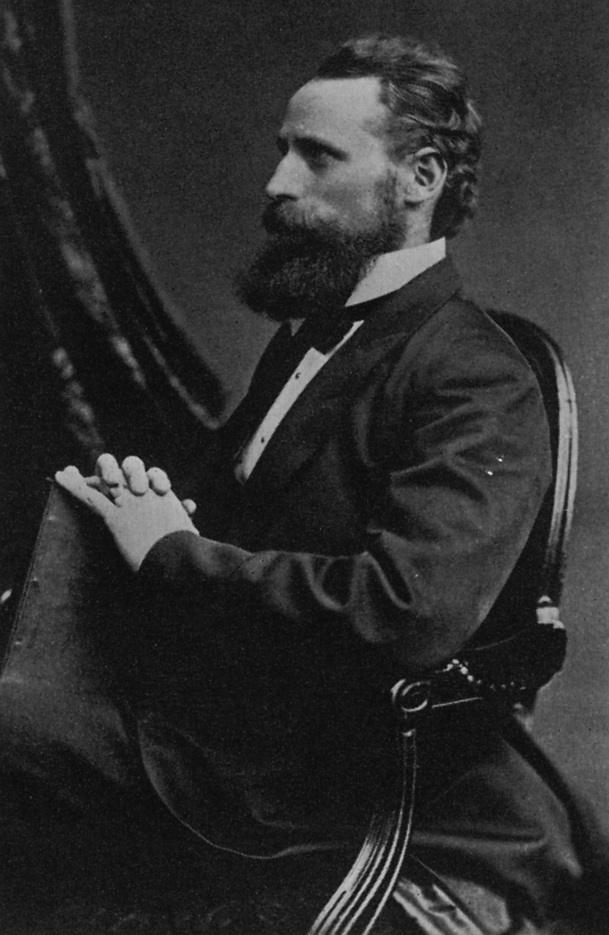
Jean Paul Richter
(1847-1937)
She was asked and she did accept – to be the dedicatee of the monumental work, that still can be seen as one of the pioneering works of Leonardo da Vinci scholarship, and Leonardo da Vinci philology very in particular, and originally was published in 1883 in two volumes, »compiled and edited from the Original Manuscripts«. Because there is not a little confusion in the public – and on popular request – we assemble here a few concise informations as to the various editions of that Opus magnum and also of satellite works associated with it. And only the first edition, published by Sampson Low, Marston, Searle & Rivington (188, Fleet Street, London) (http://en.wikipedia.org/wiki/Sampson_Low), was dedicated to Her Most Gracious Majesty the Queen, i.e. to Queen Victoria (http://en.wikipedia.org/wiki/Queen_Victoria).

(Picture: openlibrary.org)

(Picture: amazon.de)
-->https://archive.org/details/literaryworksofl01leonuoft
-->https://archive.org/details/literaryworksofl02leonuoft
Two) His Most Ardent Adversary
The painter and art critic Heinrich Ludwig (1829-1897), who, in 1882, had provided a three volume edition of Leonardo’s Trattato della Pittura (http://en.wikipedia.org/wiki/Codex_Urbinas). For Ludwig see: http://www.amazon.de/Heinrich-Ludwig-die-»ästhetischen-Ketzer«/dp/3412210463; and for his edition of 1882 (another volume with especially ardent attacks on Richter was following in 1885): https://archive.org.
It had been Richter’s original aim to track down an original manuscript of the Trattato, written by Leonardo himself (because the Codex Urbinas, as the main source for any edition of the Trattato is not written by Leonardo’s own hand). Yet there was no such book manuscript to be found (only manuscript material that obviously had been used by the compiler of the Codex Urbinas). And so Richter went on to transcribe and to assemble all the handwritten manuscript notes, written by Leonardo’s own hand, that he could get his hand on: in England, France, Germany and Italy. And from this work, from the reading and transcribing Leonardo’s famous left-handed mirror writing (see: http://www.leonardodigitale.com), the Literary Works, in fact an anthology with Italian and English parallel texts and with materials assembled by their subject, did result. The title of that anthology has from the beginning caused some confusion, since »literary» has to be understood here in a very wide sense. Yet some notes by Leonardo, fables, tales and other stories of various kinds, can also be regarded as »literary« in a narrow sense. In their way to organise the manuscript and also the visual materials (because drawings and text, in Leonardo, can hardly be separated), in Richter’s ability also to cross reference and to comment the notes, the Literary Works of Leonardo da Vinci can still be regarded as a pioneering, path breaking and epoch making work of Leonardo da Vinci philology (as can, not to forget, Ludwig’s work and also other’s works, as well).
Three) The Secret Godfather

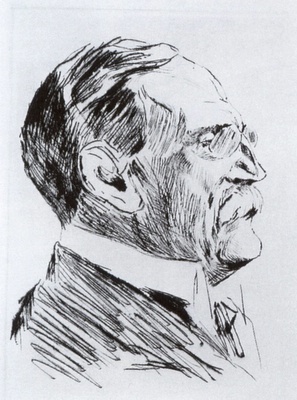
Wilhelm von Bode (picture: museo-on.com)
Of course Jean Paul Richter’s mentor, connoisseur of art Giovanni Morelli (http://www.seybold.ch/Dietrich/ForthcomingGiovanniMorelliAPortrait), who had not only his relations play as to pave Richter a way to the source manuscripts in England and in Italy, but did help in revising the Italian transcriptions, and in many other respects (for example in giving his opinions as to the authenticity of Leonardo drawings that were to be reproduced in great number, and many also for the very first time). But not to forget: also Morelli’s opponent Wilhelm Bode (http://de.wikipedia.org/wiki/Wilhelm_von_Bode) did help – in providing for subscribers for the costly volumes in Germany. And although no one did ever take notice – here the two opponents, yet without their actual planning, did actually work together. Morelli, Senator of the Kingdom of Italy, did also provide for subscribers, for example among his fellow senators. Many other people were of help as well in various respects (see the preface to the Literary Works).
Four) The Costs

Interior of the Wallace Collection
According to Jean Paul Richter’s diaries the total costs amounted to 1514 pounds. This refers probably to the mere production costs, while Richter could only bring this self-imposed task to an end, because King Ludwig II of Bavaria had generously and unexpectedly paid a high bonus for Richter providing him with a catalogue of the Wallace Collection (another task that rather put the getting done of the Leonardo project at risk at first). The costs in time and energy finally amounted to a multiple of what Richter had expected.
Five) The Career
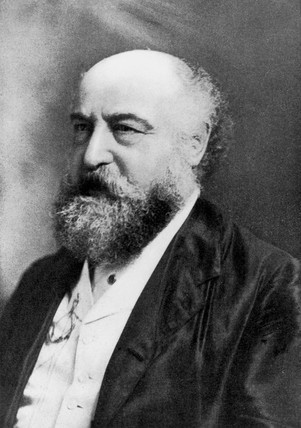
Ludwig Mond (picture: daviddarling.info)
Literally days after the Literary Works were published in 1883 Jean Paul Richter did embark on the new adventure of his life: he did, also thanks to the reputation he earned with the Literary Works, establish himself as a connoisseur of art, and only at the very end of his life he was actually to come back to Leonardo da Vinci philology, when he, in collaboration with his eldest daughter Irma and at Lugano, did revise once again his Opus magnum.
It was the German-born industrialist Ludwig Mond (http://en.wikipedia.org/wiki/Ludwig_Mond), a chemist and entrepreneur, who did seek Richter’s services as a connoisseur in the main place, and also his organisational skills, when putting together what is known today as the Mond collection (partly in the National Gallery of London) and also of the collection of Henriette Hertz (who lived with the Monds). In the end of 1884 Richter went to live in Italy with his family, where he did further develop as a scholarly connoisseur, guided by Morelli, but where he also was able to make his actual fortune, in the early 1890ies, and with some rather savy and questionable dealings. But he did manage to be welcomed in the circles of Roman high society and in 1892 he was even being granted an audience by the Queen of Italy, who did ask him, in German, about his Leonardo edition and about his further plans (for a detailed account of his whole biography see my Das Schlaraffenleben der Kunst and also the section dedicated to the life and times of Jean Paul Richter on this website).
Six) The Second and Posthumous Edition of 1939

(Picture: Wici)
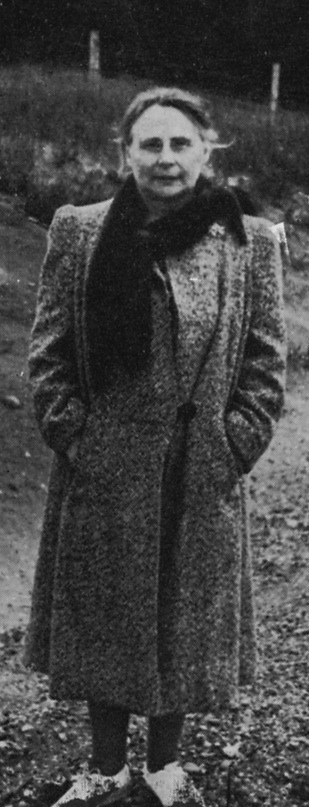
Irma A. Richter (1881-1956; for detailed picture credit see my Das Schlaraffenleben der Kunst), eldest daughter of Jean Paul Richter, was also an actual godchild of Giovanni Morelli and also of art historian Carl Justi (which does not mean that she followed the work of these two godfathers in her own work). Her own Opus magnum is a study entitled Rhythmic Form in Art (1932), which was also the fruit of her experiences as a trained painter. Yet she had given up to live on painting and on teaching and dedicated herself, in her later years, mainly to art historical studies, mostly in association with the research done by her father (for more insights into the careers of all the children of Jean Paul and of Louise M. Richter see also my Das Schlaraffenleben der Kunst).
Fifty years of Leonardo da Vinci scholarship had brought much progress, a better knowledge of Leonardo’s sources, and also various facsimile editions of various manuscripts. The Literary Works had to be updated, not in its organisational principles, but in taking into account the general growth of knowledge. Jean Paul Richter, who had lived most parts of his life on applied connoisseurship, dedicated the very last years of his life to this task, in collaboration with his daughter Irma. Yet he died in 1937 at Lugano, where he had, after living in Germany, England and Italy had found his last home, and it was his daughter Irma A. Richter who brought the revision of the Opus magnum to an end. At a particular unfavorable moment, in 1939 and with the beginning of the Second World War.
1939: posthumous Second Edition of the Literary Works, provided by Jean Paul Richter and his eldest daughter Irma A. Richter for the Oxford University Press (http://en.wikipedia.org/wiki/Oxford_University_Press); enlarged and revised, the two leather bound volumes are dedicated to Irma’s sister Gisela M.A. Richter (http://en.wikipedia.org/wiki/Gisela_Richter); most important: Ernst H. Gombrich (http://en.wikipedia.org/wiki/Ernst_Gombrich) has provided an detailed index of names and subjects to the two volumes, whereas the First Edition had had none
Seven) The Aftermath, the Reprints and the Commentary to the Literary Works of Leonardo da Vinci by Carlo Pedretti
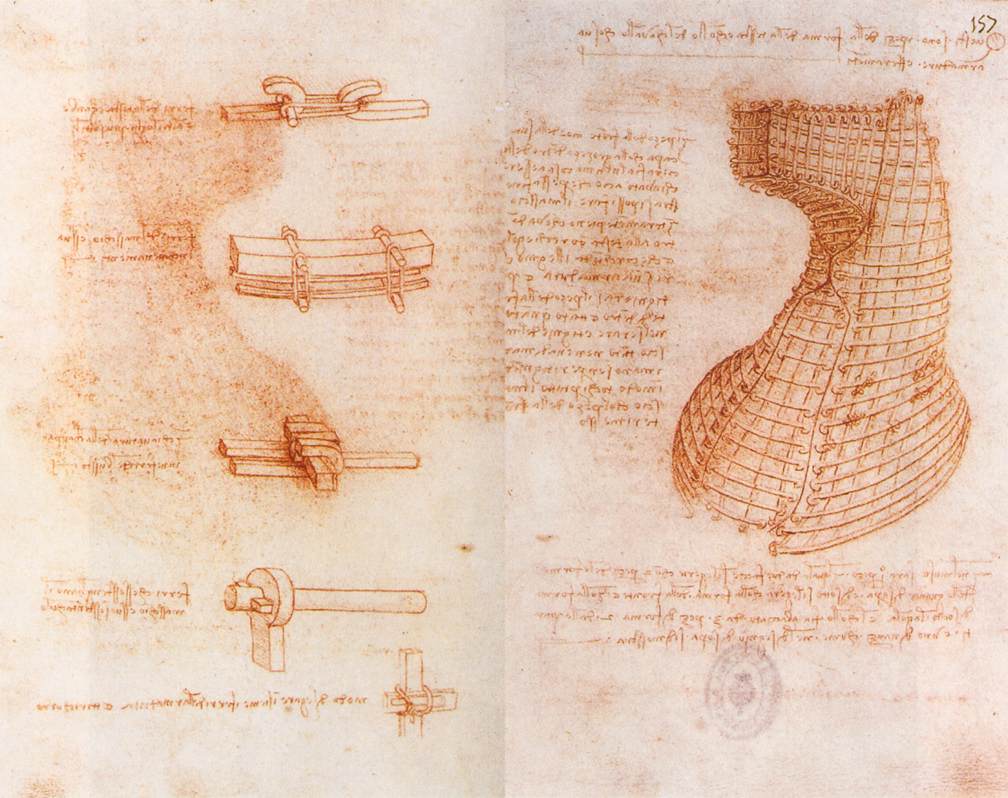

Unlike the First the Second World War meant a complete break of Leonardo da Vinci scholarship, and after the war there was only step by step and slowly a new beginning. In 1952, however, the 500th anniversary of Leonardo was celebrated, scholars gathered at congresses, and discoveries were soon to come.
1966: discovery of the so-called Codices Madrid (http://en.wikipedia.org/wiki/Codex_Madrid_%28Leonardo%29); this find that is especially important as to getting to know the engineer Leonardo da Vinci reminds also that Jean Paul Richter had, in his edition, deliberately focussed on materials that, in his view, were essential to the getting to know of the artist Leonardo (which also means that he had left much materials away that were/are dealing primarily or only with mathematics or with the natural sciences in a very specialist’s sense)
1970: Third Edition of the Literary Works: Phaidon Reprint (http://en.wikipedia.org/wiki/Phaidon_Press) of the Second Edition of 1939 (with new black and white photographs instead of the original heliogravures; the format is being reduced in size); a reprint of the First Edition (not by Phaidon) is also being published and provides for a great deal of confusion, since from the First to the Second Edition, from 1883 to 1939, Leonardo da Vinci scholarship has made progress for more than half a century (!); but the First Edition thus still circles under the title The Notebooks of Leonardo da Vinci

(Picture: amazon.ca)
1977: two volume Commentary to the Third Edition of 1970 (the Phaidon Reprint) by Carlo Pedretti (http://en.wikipedia.org/wiki/Carlo_Pedretti); the block of the in sum four volumes in equal size makes the Richter/Pedretti rock of Leonardo da Vinci scholarship; the Commentary is not only being a commentary, but assembles also unpublished materials of various kinds, and it is also indexed
MICROSTORY OF ART
ONLINE JOURNAL FOR ART, CONNOISSEURSHIP AND CULTURAL JOURNALISM
HOME
© DS